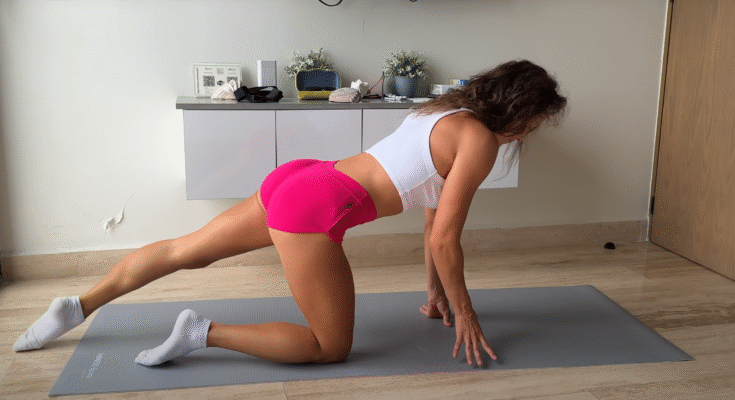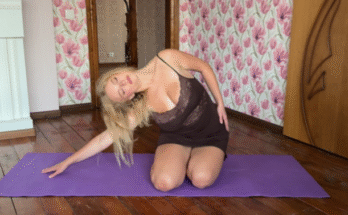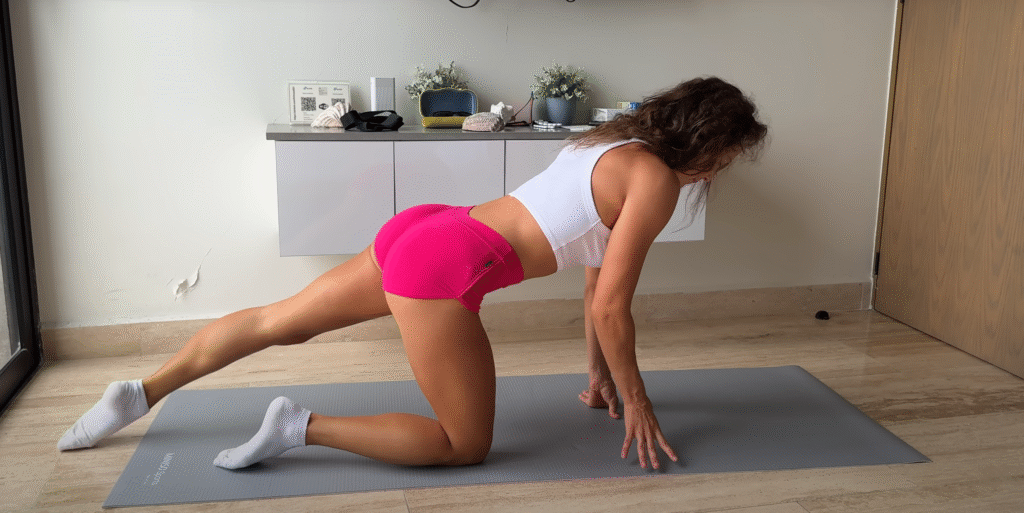
The soft glow of early morning sunlight filled the studio, spilling over the wooden floor like golden silk. A faint scent of sandalwood drifted through the air, calming the mind before movement began. Standing in the center of the mat was Chebyjane, her long hair tied neatly in a braid, her face serene yet focused. Today’s session was all about one of the most essential yet often neglected parts of the body — the hips.
“Welcome, everyone,” she said gently, her voice carrying the warmth of quiet confidence. “We’ll take time today to explore the hips — not just stretching them, but opening them to release tension, emotion, and energy.”
The hips, Chebyjane explained, are often considered the “emotional storage” of the body. When people feel stress, sadness, or frustration, it frequently settles in the hips. That’s why hip stretches can sometimes feel intense — they release not just physical stiffness but emotional blockages too.
She began the session in Easy Pose (Sukhasana), crossing her legs and sitting tall. With eyes closed, she invited everyone to take a few deep breaths — inhaling through the nose, exhaling slowly through the mouth. “Breathe into your hips,” she whispered, “and allow them to soften with each exhale.”
Gentle Warm-Up
Chebyjane rolled her shoulders back and placed her hands on her knees, moving into gentle Seated Hip Circles. The body began to awaken, following the slow, circular rhythm — forward, sideways, back, and around again. “Imagine you’re drawing a circle with your spine,” she said. “There’s no rush. Let your hips guide the motion.”
After a few rounds, she switched directions, feeling warmth bloom through her lower back and pelvis. Then she leaned forward into a Seated Forward Fold, extending her arms ahead, resting her forehead on the mat. “This helps lengthen the spine and prepares the hips to open deeper,” she explained softly.
Butterfly Pose
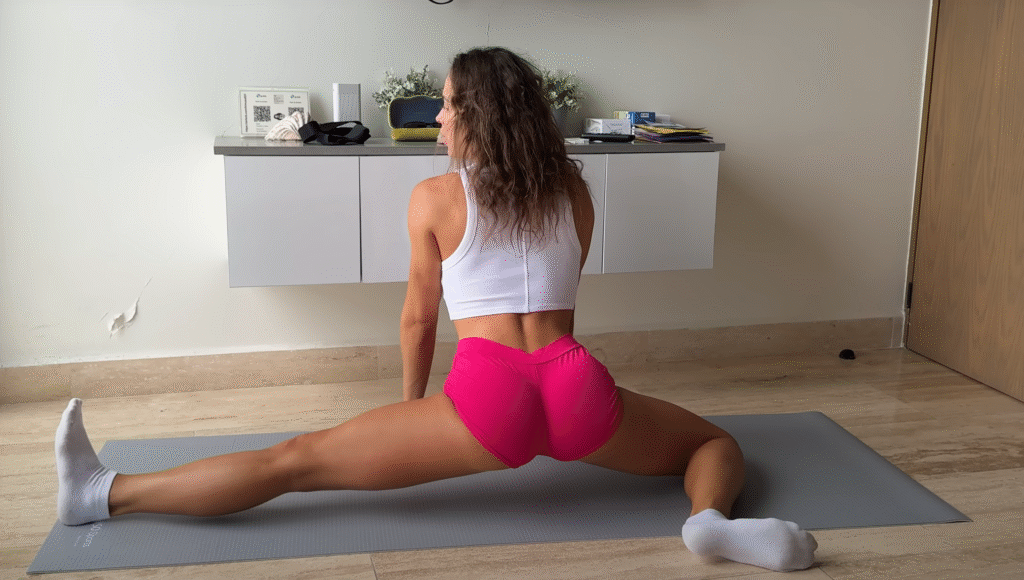
Next came Baddha Konasana, the Butterfly Pose. She brought the soles of her feet together and gently pressed the knees toward the ground. “If your hips are tight, that’s okay,” she smiled. “Allow gravity to do the work. The goal isn’t to force — it’s to invite openness.”
She demonstrated small fluttering movements, letting the knees bounce lightly up and down. The motion encouraged blood flow to the hip joints, waking them gently.
“Your breath is your best guide,” Chebyjane said. “When you feel resistance, breathe into it. When you feel release, breathe gratitude.”
Low Lunge Flow
Transitioning into Low Lunge (Anjaneyasana), Chebyjane stepped her right foot forward, letting her left knee rest on the mat. With hands on her right thigh, she leaned forward slightly, feeling the deep stretch through the left hip flexor.
“So many of us sit for hours every day — at desks, in cars, on couches,” she noted. “That tightens the hip flexors and weakens the glutes. This stretch helps restore balance.”
She reached her arms overhead, lengthening through her spine. “Imagine your heart reaching for the sky while your tailbone sinks toward the earth.”
After holding the stretch, she gently placed her hands beside her front foot and shifted back into Half Splits (Ardha Hanumanasana), straightening her right leg. The hamstrings joined the conversation, adding depth to the flow.
“Yoga is not about flexibility; it’s about awareness,” she said. “Notice where you feel tension, and honor it.”
After repeating the sequence on both sides, the studio was filled with the sound of synchronized breath.
Pigeon Pose
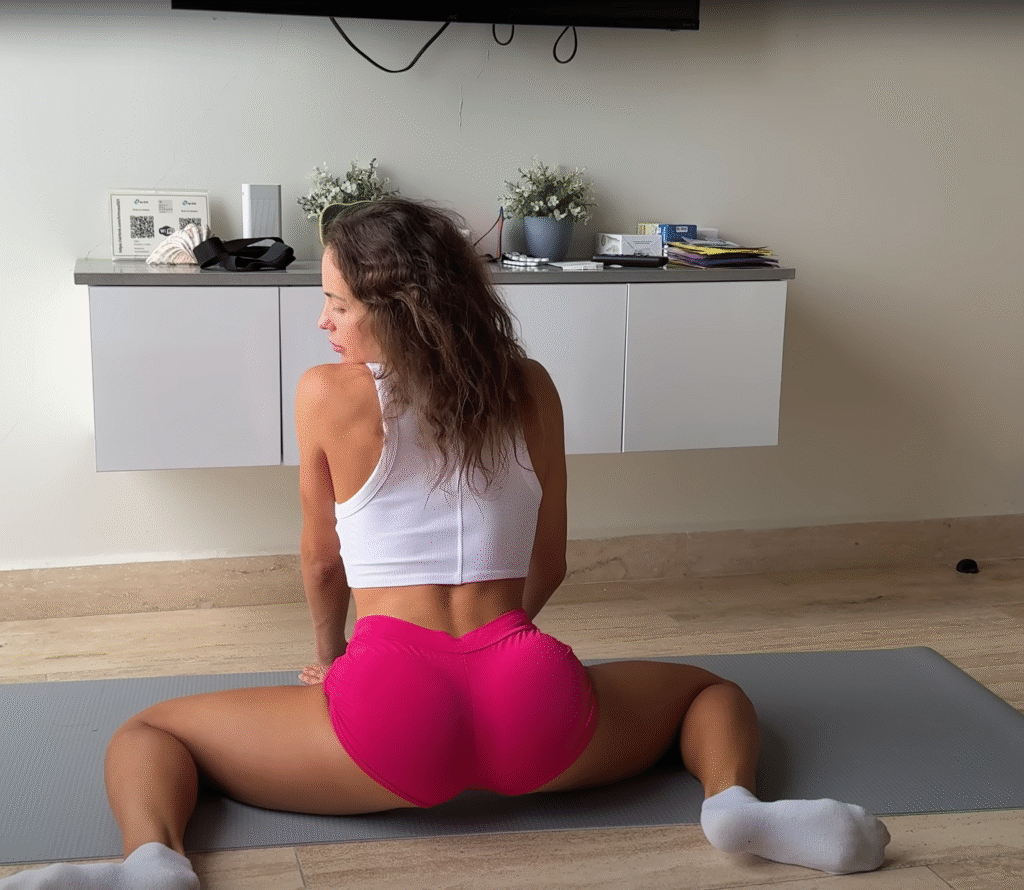
Then came the heart of the practice — Pigeon Pose (Eka Pada Rajakapotasana), a classic and deeply therapeutic hip opener. Chebyjane guided the class carefully.
“From Downward Dog, bring your right knee forward and place it behind your wrist,” she instructed. “Your right foot can angle in as much as your body allows. Extend your left leg straight behind you and settle your hips toward the mat.”
She adjusted her posture, ensuring her hips stayed square. “If this feels too intense, place a cushion or block under your right hip,” she said kindly.
As she folded forward over her front leg, her breath deepened. “This is where the magic happens,” she murmured. “We meet resistance here — physical and emotional. But remember, the more you breathe, the more you release.”
A calm stillness filled the space. Some students had tears in their eyes — not from pain, but from release. That’s what hip openers often do: they clear the clutter within.
After switching sides, Chebyjane smiled softly. “You’re doing beautifully. Your body is opening, your energy is flowing.”
Lizard Pose
To deepen the stretch, she transitioned into Lizard Pose (Utthan Pristhasana). From a low lunge, she brought both hands inside her front foot, allowing her hips to drop closer to the ground.
“Keep your back leg active and your chest lifted,” she guided. “This pose targets the inner thighs, groin, and hip flexors — a full, deep stretch.”
For an advanced variation, she suggested coming down to the forearms or gently rocking the hips side to side. The rhythmic motion helped release deep-seated tightness.
“Think of your hips as doors,” she said poetically. “Sometimes they creak when you open them, but once they’re open, fresh air flows through.”
Supine Figure Four
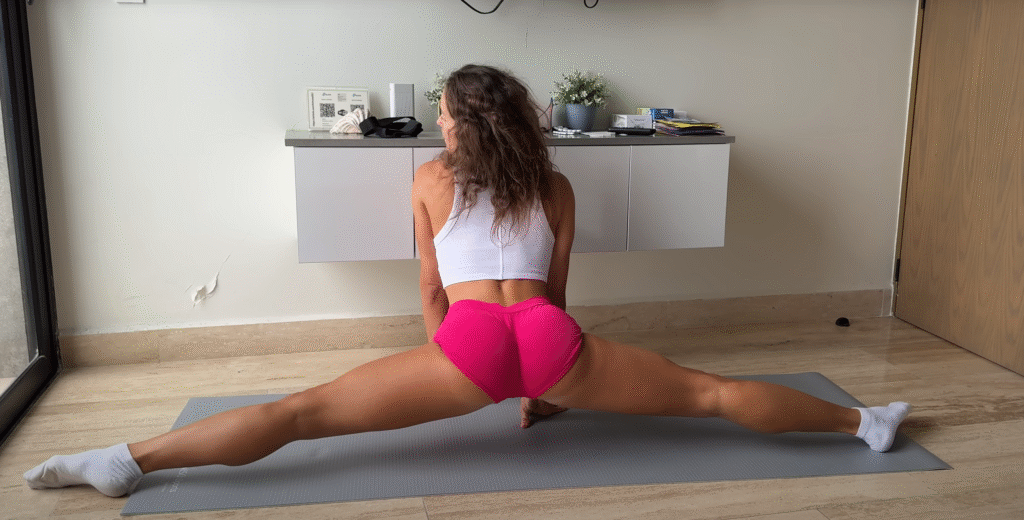
As the flow moved toward relaxation, Chebyjane invited everyone onto their backs. “Let’s give the hips a loving finish,” she said, moving into Supine Figure Four (Supta Kapotasana).
She crossed her right ankle over her left thigh, threading her hands behind her left leg and gently pulling it toward her chest. The outer hip muscles — glutes and piriformis — received a satisfying release.
“Hold this for a few breaths,” she whispered, “and feel the stretch melt away your day.”
Switching sides, she encouraged everyone to surrender completely. “The hips are your foundation,” she reminded. “When they’re open, you move with freedom, both in body and in spirit.”
Final Relaxation
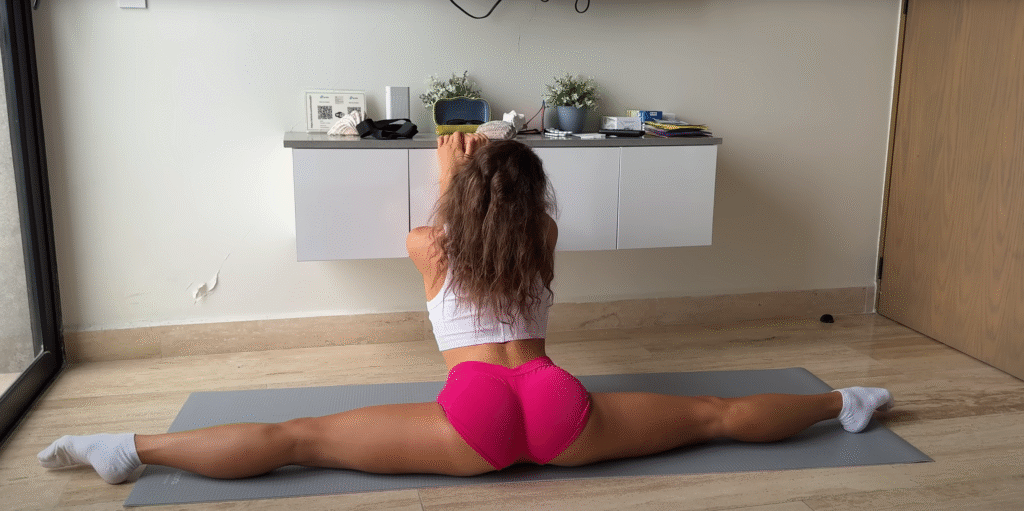
Finally, she guided the class into Savasana — lying flat, arms and legs relaxed. The music softened, blending the sound of soft flutes and wind chimes.
Chebyjane’s voice floated through the stillness: “You’ve worked with grace. You’ve stretched not only your muscles but your mind. Let this moment remind you that flexibility is not just physical — it’s the art of letting go.”
The room was silent except for slow, rhythmic breathing.
After a few minutes, she invited gentle movement back into the body — wiggling fingers, rotating ankles, and stretching arms overhead. Rolling to one side, everyone sat up again, hands pressed together at heart center.
“Thank yourself for showing up,” Chebyjane smiled softly. “Your hips are the gateway to your inner strength, your creativity, and your freedom.”
With a final deep breath in and a slow exhale, she concluded, “May you walk through your day with open hips and an open heart.”
As the session ended, sunlight now fully embraced the studio. The students rolled up their mats slowly, their faces relaxed, their bodies lighter. The journey through the hips had been more than just a physical exercise — it had been a quiet act of healing.
And at the center of it all stood Chebyjane, radiating calm energy — a reminder that true strength begins with softness, and true flexibility begins with presence.
